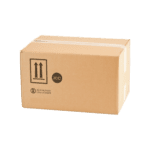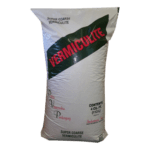
Vibration and UN Specification
A while back I wrote an article about UN Testing requirements of a 4G box.
In addition to the drop test, stack test, and cobb test, the vibration standard is also a requirement per the 49CFR when certifying a UN packaging mentioned in the above blog. Vibration testing is a critical component of the UN package certification process. Using a vibration table, this testing simulates the vibrations and shocks that packages may experience during transportation and helps ensure the integrity and safety of the contents. By subjecting packages to controlled vibration levels, manufacturers can validate their designs and identify any potential weaknesses in the packaging before products are shipped. This helps prevent damage, leaks, or other issues that could arise during the rigors of the supply chain. Understanding the vibration UN package testing requirements is essential for businesses shipping hazardous materials or other sensitive goods to meet regulatory standards and protect both their products and customers.
What Are the Requirements?
In Canada, the answer is simple, the vibration standard is not a requirement of the TP14850 when certifying a non-bulk UN rated packaging. In the United States, it is a different story. Per the 49CFR at 178.608, you will see the requirements for the vibration test standard. Essentially, three sample packages are selected at random, and must be filled and closed as intended for transportation. This would mean filling it to the correct weight with the specific inner packaging and tape for the outer box. The three test sample packages must be placed on a vibrating table that has a vertical or rotary double-amplitude (peak-to-peak displacement) of one inch. The packages are then constrained horizontally to prevent them from falling off the platform, but must be left free to move vertically, bounce and rotate in order to imitate real life transportation movement such as by vehicle or air for example. The test is performed for one hour at a frequency that causes the package to be raised from the vibrating platform to such a degree that a piece of material of approximately 1.6 mm (0.063 inch) thickness (such as steel strapping or paperboard) can be passed between the bottom of any package and the platform. Once the testing is completed, the packages are removed from the vibration table and turned to the side to check for leakage. If all three test samples show capabilities of withstanding rupture or leakage during the testing process, they would receive a passing grade and the results would be included in the UN packaging test report. No test sample should show any deterioration which could adversely affect transportation safety or any distortion liable to reduce packaging strength. If you are looking for packaging that has the capability of passing the vibration standard test, all our UN rated packaging meet this requirement.
Do you have questions about UN Packaging? Take a look at our UN Packaging FAQ or contact our team of experts at 855.734.5469 or send us an email, we’re happy to help.
Stay up to date and sign up for our newsletter!
We have all the products, services and training you need to ensure your staff is properly trained and informed.
 Custom Packaging Design Custom Packaging Design |
 4G UN Lithium Battery Box 4G UN Lithium Battery Box |
 Vermiculate, Grade A4 Vermiculate, Grade A4 |






 ICC USA
ICC USA ICC Canada
ICC Canada